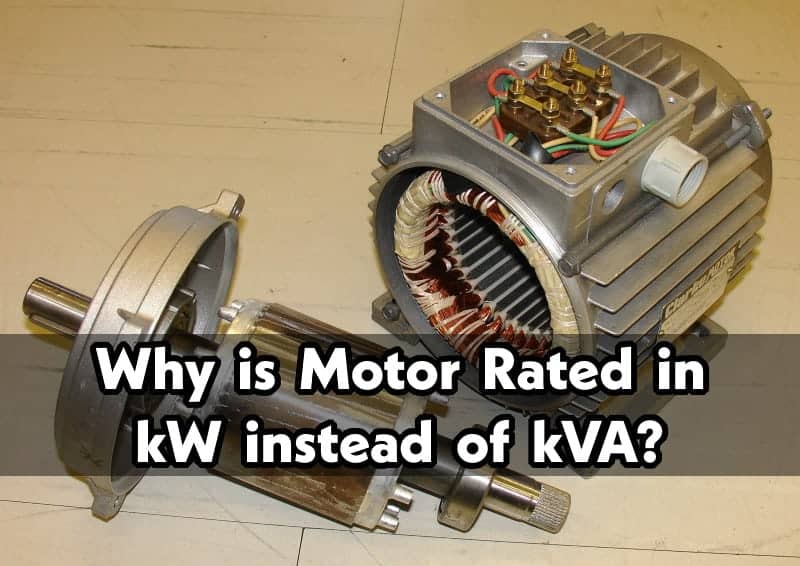Why are Electric Motors Rated in kW or Horsepower (hp) and Not in kVA?
We already know that transformer ratings may be expressed in kVA instead of kW. The same applies to generators and alternators, which are also rated in kVA while motors are rated in kW or hp (horsepower). This is because the manufacturer and designer don’t know the actual consumer power factor (P.F) while manufacturing transformers and generators.
The power factor (PF) of transformers and generators/ alternators depends on the nature of the connected load, such as resistive, capacitive, and inductive loads. These factors affect the overall power factor of transformer and generator, as they consume reactive power according to the load. The scenario is different in the case of the rating of electric motors.
On the other hand, an electric motor has a fixed power factor, i.e., the motor has a defined power factor (P.F), and the rating is mentioned in kW on the motor nameplate data table. That’s why we rate the motor in kW or HP (kilowatts/horsepower) instead of kVA. In clearer terms, the motor only consumes active power in watts as input and provides mechanical power in hp (horse power) or kW at the motor shaft as output.
In addition, an electric motor is a machine that converts electrical power into mechanical power. In this case, the load is not electrical but mechanical (motor’s output), and we take into account only active power, which has to be converted into mechanical load. Moreover, the motor power factor does not depend on the load, and it works with any power factor due to its design. These are the simple reasons why a motor is rated in horsepower (hp) or watts (W) instead of volt-amperes (VA).
Related Posts:
- Why is a Transformer rated in kVA, not in kW?
- Why is an Alternator and Generator rated in kVA, not in kW?
- Why is an Air-condition (AC) Rated in Ton, not kW or kVA?
- Why is a Battery rated in Ah (Ampere hour) and not in VA?
- Why is a Power Plant Capacity Rated in MW and not in MVA?
- Why was a Circuit Breaker Capacity Rated in MVA and Now in kA and kV?

 Why is the Neutral Prong or Slot Wider on a Plug or Outlet?
Why is the Neutral Prong or Slot Wider on a Plug or Outlet? Why are there Grooved Slots in the Pins of Two Pin Plugs?
Why are there Grooved Slots in the Pins of Two Pin Plugs? Is It Dangerous to Carry a Battery in an Elevator?
Is It Dangerous to Carry a Battery in an Elevator? Why Doesn’t DC System Require a Grounding System Similar to AC System?
Why Doesn’t DC System Require a Grounding System Similar to AC System? Why Do Americans Use Gas Kettles Instead of Electric Kettles?
Why Do Americans Use Gas Kettles Instead of Electric Kettles? What Will Happen If You Connect a Male-to-Male Plug Between Outlets
What Will Happen If You Connect a Male-to-Male Plug Between Outlets